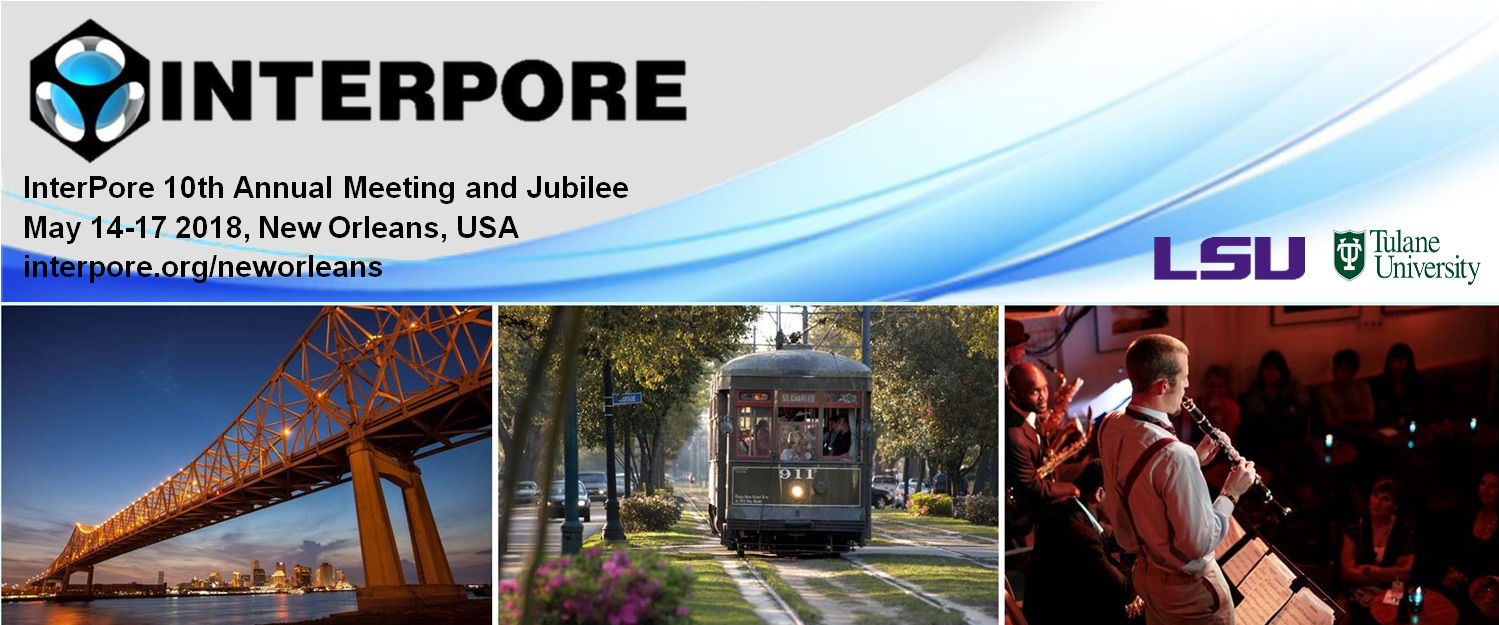Speaker
Description
Fractures act as dominant pathways for fluid flow in low-permeability rocks. However, in many subsurface environments, fluid rock reactions can lead to mineral precipitation, which alters fracture surface geometry and reduces fracture permeability. In natural fractures, surface mineralogy and roughness are often heterogeneous, leading to variations in both velocity and reactive surface area. The combined effects of surface roughness and heterogeneous mineralogy can lead to large variations in local precipitation rates. The resulting alteration of transport properties defy description by currently existing continuum models. We present results from an integrated experimental and computational study aimed at quantifying the relative importance of aperture variability and mineral heterogeneity on local mineral precipitation rates.
Experiments were carried out in transparent analog fractures with one of the glass fracture surfaces initially seeded with small (~0.01 mm$^2$) localized CaCO$_3$ regions uniformly distributed over ~12% of the fracture surface. We considered two fractures, a smooth-walled fracture and a variable-aperture fracture, both with a mean aperture of about 0.1 mm. During flow experiments, a CaCl$_2$-NaHCO$_3$ solution that was supersaturated with respect to CaCO$_3$ (log($\Omega_{CaCO_3}$) = 1.44) flowed through the fracture at a constant flow rate of 0.5 mL/min. At weekly intervals during the months-long experiments, we paused flow of the reactive fluid and measured fracture aperture, tracer transport through the fracture, and reaction site distribution at high spatial resolution (83 x 83 $\mu$m) using light transmission techniques. Results showed that conductive pathways persisted for much longer times than predicted when assuming uniform surface reactivity. Furthermore, although the reactive surface area increased during both experiments, increased flow channeling led to a significant reduction in measured fracture-scale reaction rates.
To simulate reactive transport we used a quasi-steady-state 2D model that uses a depth-averaged mass-transfer relationship to describe dissolved mineral transport through the fracture and local precipitation reactions. Both aperture variability and mineral heterogeneity are explicitly represented in the model. Mineral-precipitation-induced changes to fracture surface geometry are accounted for using two different approaches: (1) by only allowing vertical growth at reactive minerals, and (2) by allowing three-dimensional mineral growth at reaction sites. Results from simulations using (1) suggest that as precipitation reduces local aperture, flow becomes increasingly focused into thin preferential flow paths. This flow focusing causes a reduction in the fracture-scale precipitation rate, and precipitation ceases when the reaction zone extends the entire length of the fracture. This approach reproduces experimental observations at early time reasonably well, but as precipitation proceeds, reaction sites can grow laterally along the fracture surfaces, which is not predicted by (1). To account for three-dimensional mineral growth (2), we have incorporated a level-set-method based approach for tracking the mineral interfaces in three dimensions. This provides a mechanistic approach for simulating the dynamics of the formation and eventual closing of preferential flow channels by precipitation-induced aperture alteration that do not occur using (1).
| Acceptance of Terms and Conditions | Click here to agree |
|---|


